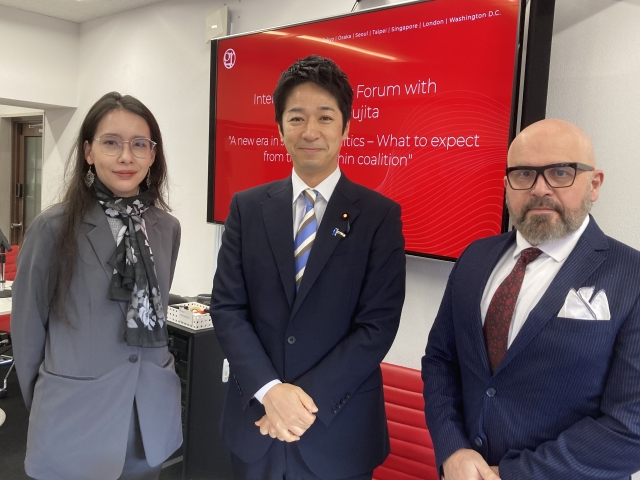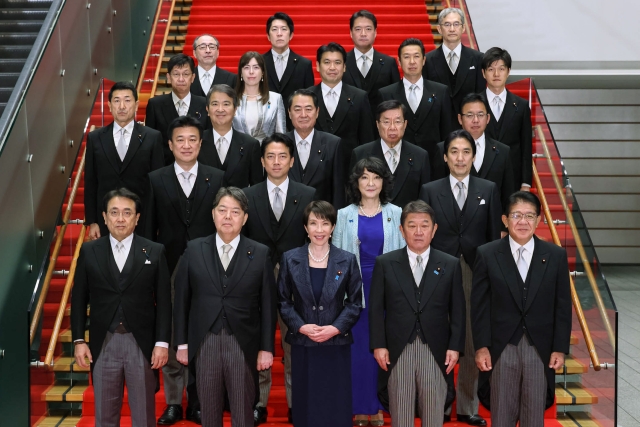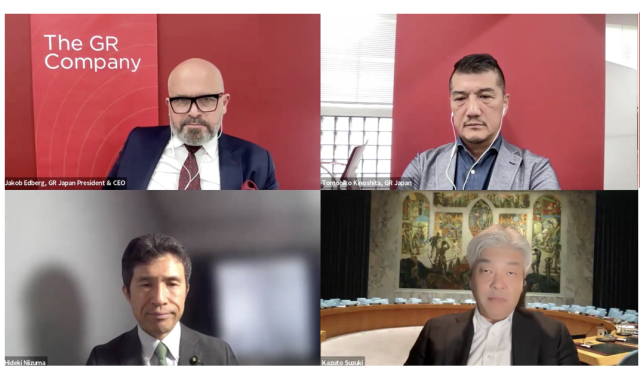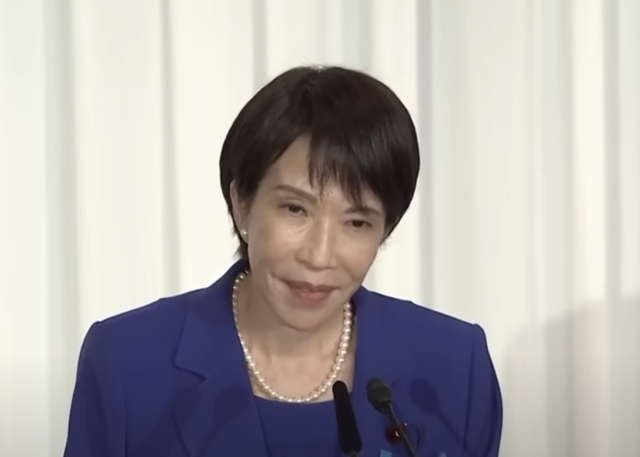Since taking the helm as prime minister for the second time last December, Abe Shinzō has focused on economic policy, including the adoption of an inflation target. The market has responded favorably, and the national mind-set seems to be shifting. Journalist Abe Jun'ichi assesses the first 100 days of the Abe administration. Journalist Junichi Abe takes a look at how Japan has changed over the past 100 days.
A hundred days have passed since the start of Prime Minister Abe Shinzō’s administration, and he seems to have made a good start with his economic policies, dubbed “Abenomics.” At this early stage we have not yet seen major changes in the real economy, but the overvalued yen has fallen sharply, the stock market has surged, and the March report from the Bank of Japan on short-term business sentiment showed improvement among major corporations for the first time in three quarters.
What accounts for these positive phenomena? I believe the key lies in what we call keiki (景気) in Japanese. This is a compound of two Chinese characters, the first meaning “scenery” or “aspect” and the second meaning “spirit,” “atmosphere,” or “mood.” In modern Japanese the word is used primarily to refer to the state of the economy. I understand that it is difficult to translate into other languages because the second character gives it a psychological element, but it typifies the Japanese people’s view of economic conditions. A major factor behind the good start of Abenomics is the effect that it has had on people’s mood (economic psychology, behavioral economics), especially the proclamation of a 2% inflation target. This has made people reconsider their long-standing deflationary mind-set, that is to say, the assumption that prices will continue their prolonged decline.
The First Arrow Hits the Mark
Abenomics consists of three main planks, or “arrows,” as the prime minister calls them: bold monetary relaxation, flexibly applied fiscal stimulus, and a growth strategy to encourage private investment. The second arrow, fiscal stimulus, has been employed repeatedly over the past two decades, and given the parlous state of Japan’s public finances, there are limits to what the government can do on this front. The third is growth strategy, but this is bound to involve clashes among conflicting interests, which will take time to reconcile. So the Abe administration started out by stressing the first of the three arrows, namely, bold relaxation of monetary policy.
On April 4, exactly 100 days from the launch of the Abe administration, the Bank of Japan came out with a new set of quantitative and qualitative monetary easing policies in response to the prime minister’s agenda. Kuroda Haruhiko, the new BOJ governor appointed by Abe, delivered a clear message in his announcement of the new package, using the number “two” and the word “double” repeatedly. In order to achieve the target of 2% inflation within two years, the central bank will double the monetary base—the total volume of money in circulation—to ¥270 trillion by the end of 2014, will double the pace of its purchases of Japanese government bonds to over ¥7 trillion a month, and will double its total holdings of these bonds to ¥190 trillion. The market responded favorably to this package, which exceeded most expectations. In speaking of the measures, both Prime Minister Abe and the BOJ’s Kuroda repeated the phrase jigen ga chigau, meaning literally “of a different dimension,” in emphasizing that the package represented a bold break from the central bank’s earlier policies. This sort of language bespeaks the Abe administration’s emphasis on changing the national mind-set.
In retrospect, the focus of the new administration’s economic policy after it was launched was on setting a 2% inflation target to be shared by the government and the BOJ, along with the adoption of loose-money policies to achieve this objective. In selecting a new governor for the central bank, Abe stressed his intention of appointing someone who supported this inflation target.
Abe came out with a call for an inflation target last November, when he was leading the opposition in his capacity as president of the Liberal Democratic Party. At the time, Prime Minister Noda Yoshihiko (who headed the Democratic Party of Japan) criticized this as a threat to the independence of the BOJ, and Shirakawa Masaaki, the incumbent BOJ governor, pointedly remarked that the independence of central banks was something that had been achieved through a long historical process and that had become an international norm. When Noda dissolved the House of Representatives on November 16 and called a general election for December, monetary policy became one of the issues in the campaign. This was an unusual development.
There is no consensus, even among economists, concerning the effectiveness or wisdom of inflation targets or other bold measures to reflate an economy caught in a deflationary spiral. But the debate on this subject during the December election campaign left the general public with the impression that the inflation target Abe was calling for represented a sharp break from the existing approach, and it gave rise to hopes that it might finally become possible for the Japanese economy to shake off deflation.
After the LDP emerged from the election with a landslide victory, Abe directly requested BOJ Governor Shirakawa to consider setting a 2% inflation target. The central bank could not ignore the mandate Abe had won in a campaign that featured monetary policy as an issue. In January the BOJ changed its course, adopting the 2% target and announcing that it would continue its accommodative policy “indefinitely.” These decisions were issued in the form of a joint statement by the government and the bank. For the public, weary of years of political indecision and gridlock, the fulfillment of Abe’s campaign pledge to get an inflation target adopted represented a welcome sign of change in action.
Abe Finesses the Appointment of a New BOJ Governor
The sense of change got a boost from Abe’s selection of a new BOJ governor. The main names that came up as likely candidates were those of Daiwa Institute of Research Chairman Mutoh Toshirō (former administrative vice-minister of finance and former deputy governor of the BOJ), Asian Development Bank President Kuroda Haruhiko (former vice-minister of finance for international affairs), Japan Center for Economic Research President Iwata Kazumasa (former deputy governor of the BOJ), and Gakushūin University Professor Iwata Kikuo. But Abe faced a dilemma in making his appointment, which required the approval of both houses of the National Diet.
The ruling coalition, consisting of the LDP and the New Kōmeitō, commands a solid majority in the House of Representatives thanks to its victory in last December’s election, but in the upper house, the House of Councillors, it holds only 102 of the 236 seats. In order to secure upper house approval for its choice, the administration initially hoped to win support from Your Party, a small opposition party that backs monetary easing. But this party was against appointing anyone who was a veteran of the Ministry of Finance. Meanwhile, however, Abe’s close ally Asō Tarō, whom he had appointed deputy prime minister and minister of finance, and to whom he had also assigned responsibility for the Financial Services Agency, favored Mutoh, a MOF veteran, in keeping with his long-held belief that fiscal and monetary policy should be managed on a unified basis.
Some voices within the prime minister’s inner circle urged him to focus on political considerations, placing precedence on securing approval from the House of Councillors. But as these voices were starting to be heard, Abe got a boost from his cabinet’s approval ratings, which went up for two months in a row after his inauguration, reaching 71% in February (Yomiuri Shimbun poll). Meanwhile, some observers concluded that Iwata Kazumasa, who supported the reflationary agenda, was likely to emerge as the most generally palatable choice, but then Your Party came out against him on the grounds that he had gone along with the move to end quantitative easing in 2006, when he was serving as deputy governor of the BOJ.
Kuroda, whom Abe selected in the end, has a long history of supporting reflation, as seen in his authorship of an article that appeared in the Financial Times in 2002 (when he was serving as vice-minister of finance for international affairs) calling for inflation targeting. Last September, when Abe was running for the presidency of the LDP and came out with a call for bold monetary easing, Kuroda endorsed this view, and the two men quickly developed close ties. In selecting Kuroda to head the BOJ, Abe satisfied Asō’s wish to see the post go to a MOF veteran. And he decided to give up the idea of seeking support from Your Party, which was firmly opposed to appointment of a former MOF mandarin; instead, on the strength of his cabinet’s high approval ratings, he sought and managed to win the consent of the DPJ and other opposition groups for his selection.
Though he is a MOF veteran, Kuroda is not from the Budget Bureau, which has long been seen as the ministry’s main power center. He spent much of his career working in the international arena, and he became known as an advocate of reflation. So his appointment delivered a strong message that the new team would undertake bold monetary easing. At the same time, the fact that he was a MOF man provided reassurance to those in the market who were beginning to worry that the government and BOJ were going to go too far. In this way Abe skillfully finessed the appointment.
The TPP Talks and Growth Strategy
The Abe administration has also been working at delivering a consistent message of change through its handling of the other two arrows in the prime minister’s economic policy quiver: fiscal stimulus and growth strategy.
In January the new administration came out with a set of emergency economic policy measures involving projects worth a total of ¥20.2 trillion (including ¥10.3 trillion of government spending). It produced this package in a period of just 17 days from its launch, including the year-end and New Year’s holidays. Seeking to keep up an uninterrupted flow of fiscal stimulus, the government produced the draft of a supplementary budget for fiscal 2012 (the year through March 2013), presenting it as a “15-month budget.” And in its proposed budget for fiscal 2013, it made a sharp break with the previous DPJ administration by decisively increasing spending on public works, which the DPJ had cut steadily during its three years in power under a slogan of shifting spending “from concrete to people,” and on defense, an area in which Japan faces the challenge of China’s military buildup.
With regard to growth strategy, the administration came under some criticism for the lack of coordination among the multiple panels considering the issue, notably the Council on Economic and Fiscal Policy, the Council for Industrial Competitiveness, and the Council for Regulatory Reform, all of which include experts from outside the government. At the February meeting of the Council for Industrial Competitiveness the 10 private-sector members split into two camps—one group of five, including Lawson President Niinami Takeshi, calling for bold reforms like the step-by-step winding down of the rice crop acreage reduction program and the total opening of the farming sector to participation by business corporations, and the other group of five, including Sumitomo Corporation Senior Adviser Oka Motoyuki, advocating a more gradual approach, with reforms to be implemented first in special economic zones on a trial basis. Each of the camps produced an opinion paper presenting its views. The bureaucrats of the council’s secretariat became involved in a power struggle with the private-sector members, and matters were finally resolved with a decision to add private-sector staffers to the secretariat and to establish seven special panels to consider particular issues.
What changed the picture was the outcome of the February 22 Japan-US summit meeting with respect to participation by Japan in the Trans-Pacific Partnership round of free trade negotiations. In a joint statement issued on this occasion, Japan and the United States noted that “it is not required to make a prior commitment to unilaterally eliminate all tariffs upon joining the TPP negotiations”; this made it possible for Abe to overcome the hurdle imposed by the LDP’s campaign pledge to “oppose participation in TPP negotiations as long as this is predicated on elimination of tariffs without sanctuary [without exceptions].” On March 15, the prime minister officially announced that Japan would seek to participate in the TPP talks, a move that put the issue of farming sector reform on the front burner. With this, the prospects for the administration’s growth strategy, which had been said to lack anything to catch the eye, finally came into view.
Will the Changed Mind-set Lead to a Full-Bodied Recovery?
At the end of March, the yen/dollar exchange rate stood at ¥94 = $1 and the Nikkei 225 index of stock prices at 12,397. The yen/dollar rate was down ¥13 and the Nikkei 225 was up 37% from their respective values as of November 16, when Prime Minister Noda dissolved the House of Representatives and called a general election.
Abe and his team realize that the decline of the overvalued yen and the surge in stock prices are due in part to fortuitous external factors like the US recovery and the easing of the European debt crisis and that improved expectations have been running ahead of economic performance. In the real economy, capital investment has only begun to creep up by a small margin, and land prices are at best just showing signs of bottoming out. A full-fledged recovery is still a distant prospect.
Even so, it is clear that mind-sets are changing to a certain degree. For example, when the Abe administration came out with its unusual call for businesses to hike wages, a number of corporations responded positively, including Lawson and two other major convenience store chains. Will this improvement in economic psychology lead to a full-bodied recovery? The answer may well depend on the specifics of the growth strategy that the administration is now drawing up.




